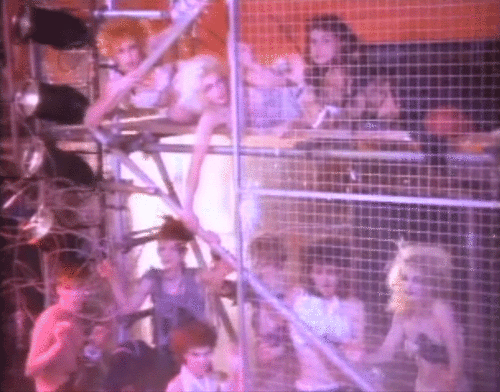Below, a Believer Music Issue exclusive from Joshua Harmon’s Annotated Mix-Tape Series.
DEF LEPPARD: “Photograph” (Pyromania LP, Mercury, 1983)
A FLOCK OF SEAGULLS: “Wishing (If I Had a Photograph of You)” (Listen LP, Jive, 1983)
I.
In 1983, in seventh grade, a friend detailed his plan to attract the attention of a girl he liked: he’d cue his Pyromania cassette to the moment in “Photograph” when the music drops out for a measure and the lead singer growls, “I wanna touch you!” Then he’d crank-call the girl, holding the phone to his stereo as he played a few inches of tape before hanging up—leaving her wondering, presumably, just who wanted to touch her (and resonating unintentionally with the advertising campaign Ma Bell introduced in 1979: “Reach out and touch someone”). Even still, my friend’s approach seemed too direct an admission of desire; at that age, I preferred simply to imagine any potential romantic encounters, so they’d have no chance of failure.

II.
In the video, the lead singer wears a sleeveless Union Jack T-shirt, a white scarf, and leather pants cinched with a set of handcuffs. Singing in a rough, impassioned falsetto, he prances, shakes shaggy hair out of his eyes, pumps his fist, clutches the microphone stand, stares at the camera, writhes with legs spread wide, thrusts his pelvis, leaps through the air nearly touching his toes, leans against the lead guitarist, points at the camera, and finally contorts his face as he howls and grimaces. Along the side of the soundstage where he struts, heavily made-up women with teased hair and torn clothes lounge and shimmy inside their cages, snarling along with the music. The lead singer’s name is Joe Elliott, and he performs a distressed ardor using classic lead-singer gestures and poses: his performance is learned from other performances, acutely aware of its audience (even though there is no audience here except director and crew) and its reception.

The song Elliott sings concerns the inability of a representation to satisfy his longing: the presences of so many representations—every time he dreams, on every page of every magazine—haunt him. He wishes only for the intimate presence of the real; he needs to touch the object of his desire to escape her many confounding images. To underscore Elliott’s postmodern dilemma, the video’s director cuts from shots of the band playing to black and white, would-be film noir scenes of a Marilyn Monroe impersonator in a trenchcoat, or lying facedown in a chalk outline, or—most hauntingly of all—posing for photographs in front of other photographs of herself. The reproductions proliferate. Everyone looks at the lens; we see everyone...
You have reached your article limit
Sign up for a digital subscription and continue reading all new issues, plus our entire archives, for just $1.50/month.
Already a subscriber? Sign in




